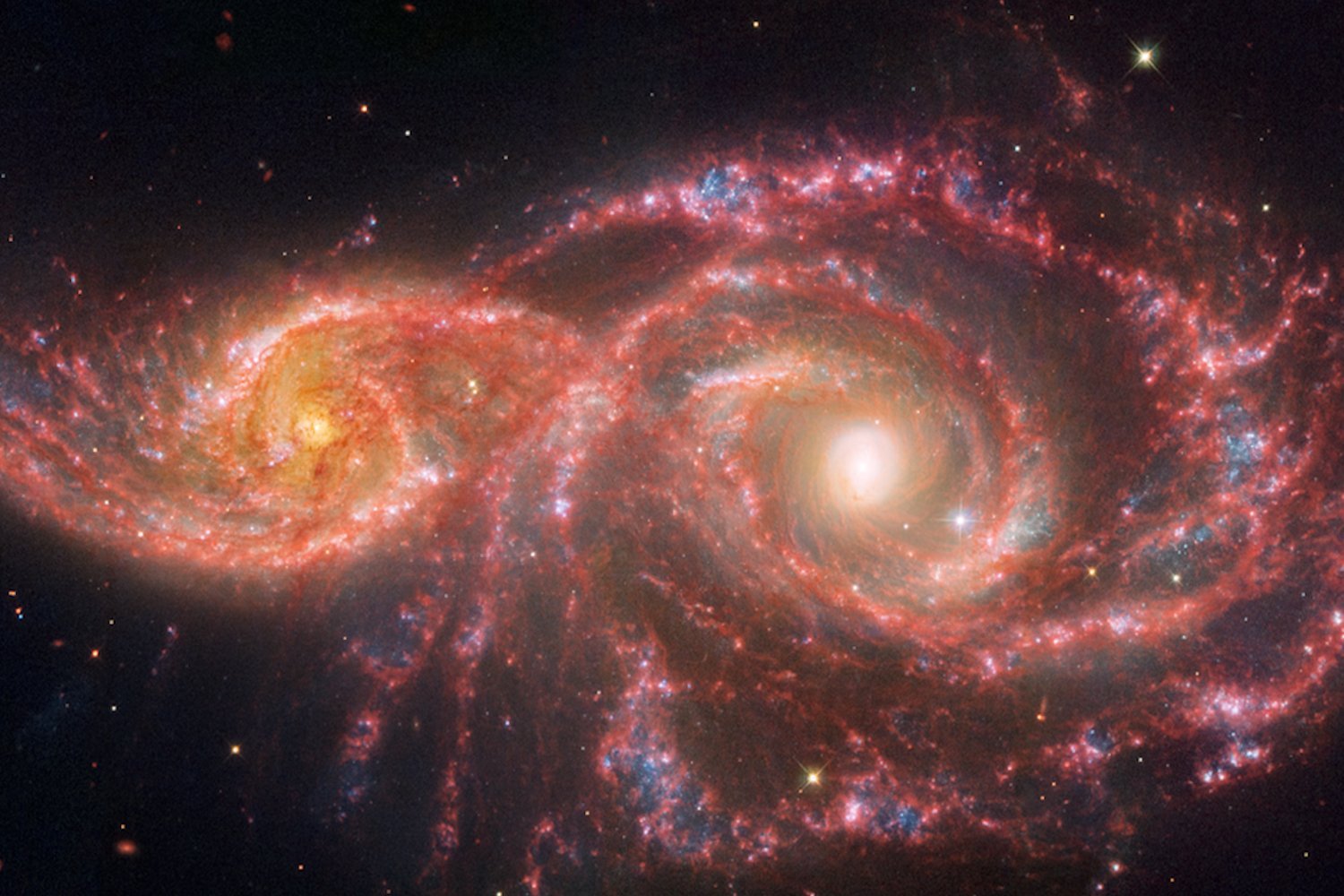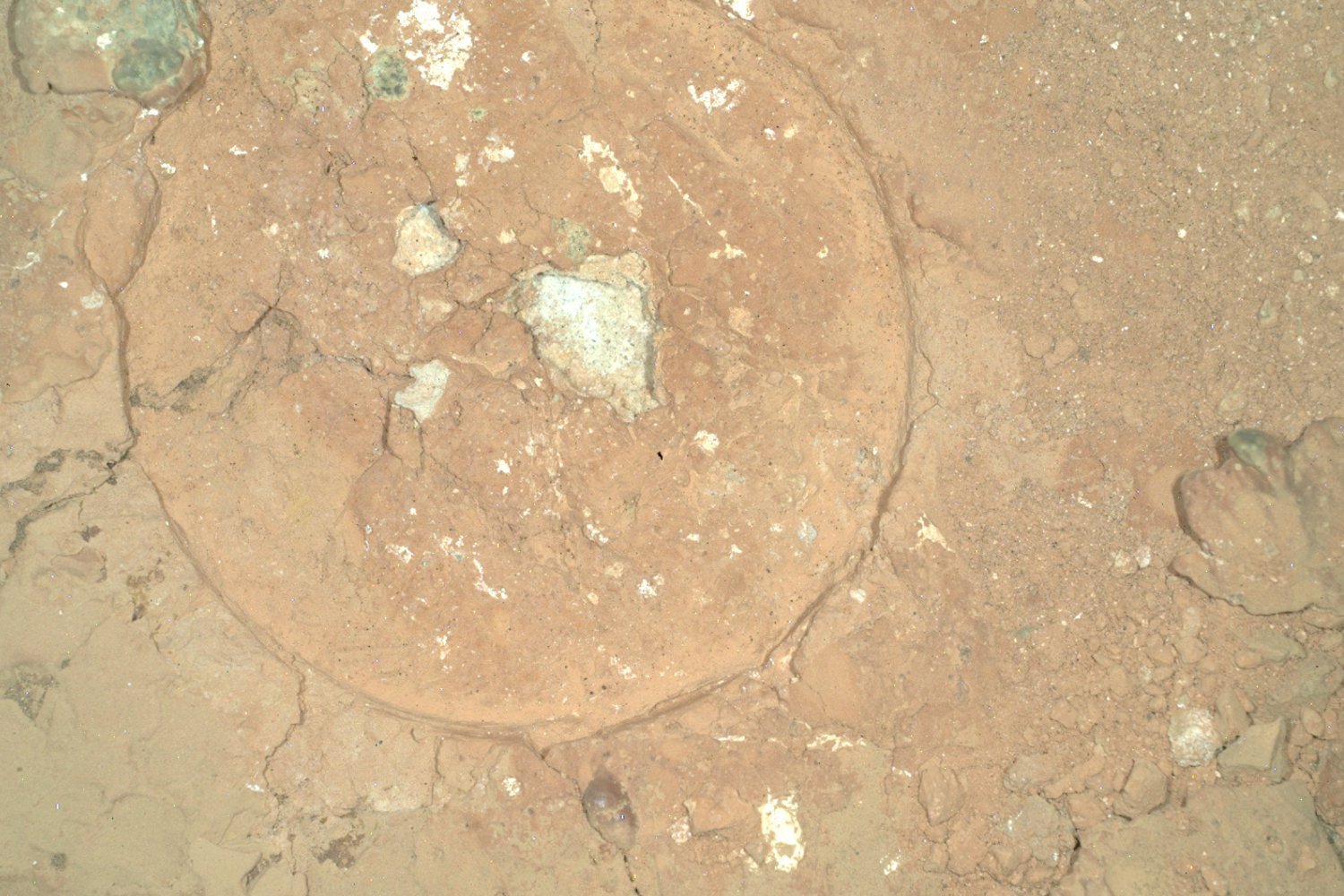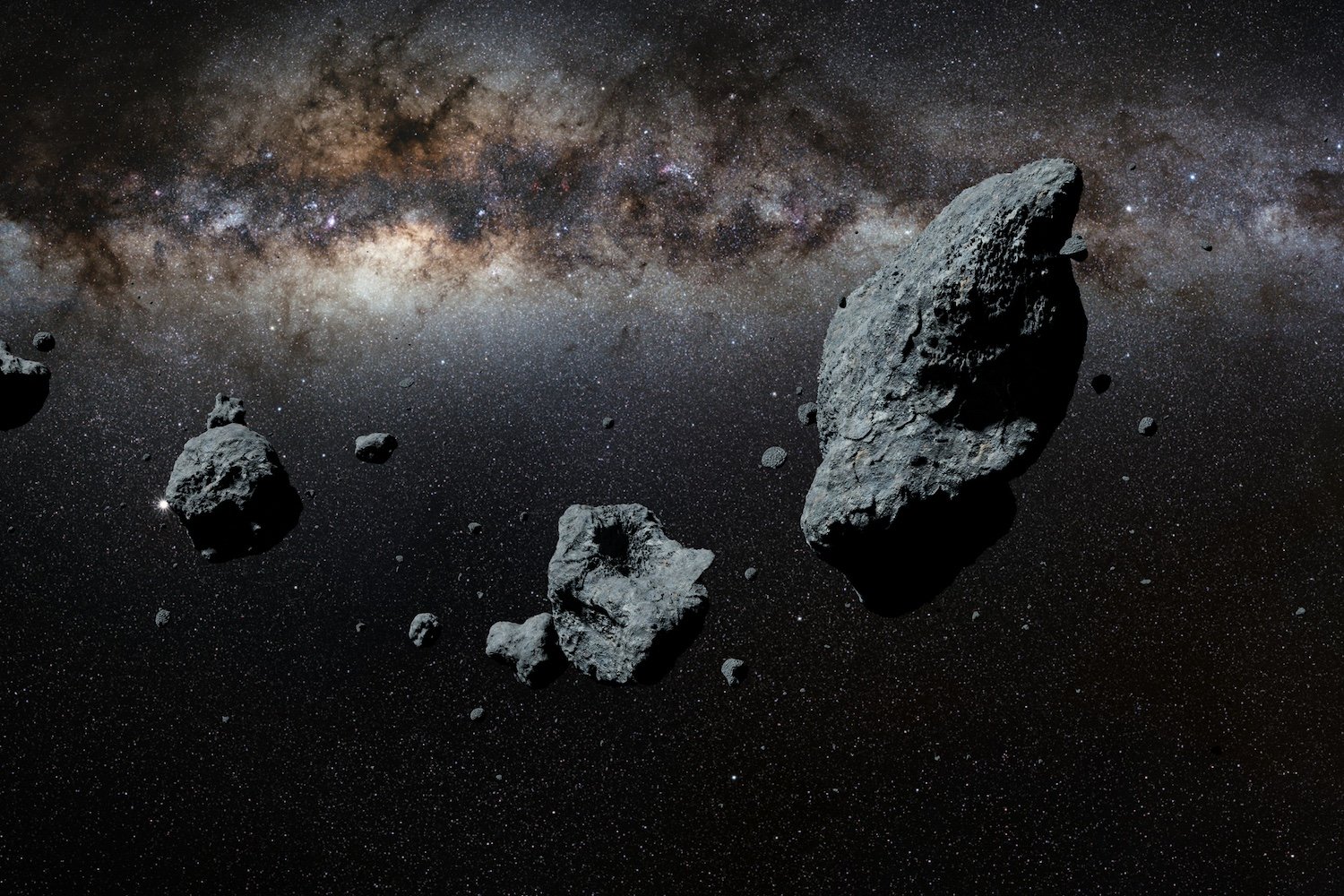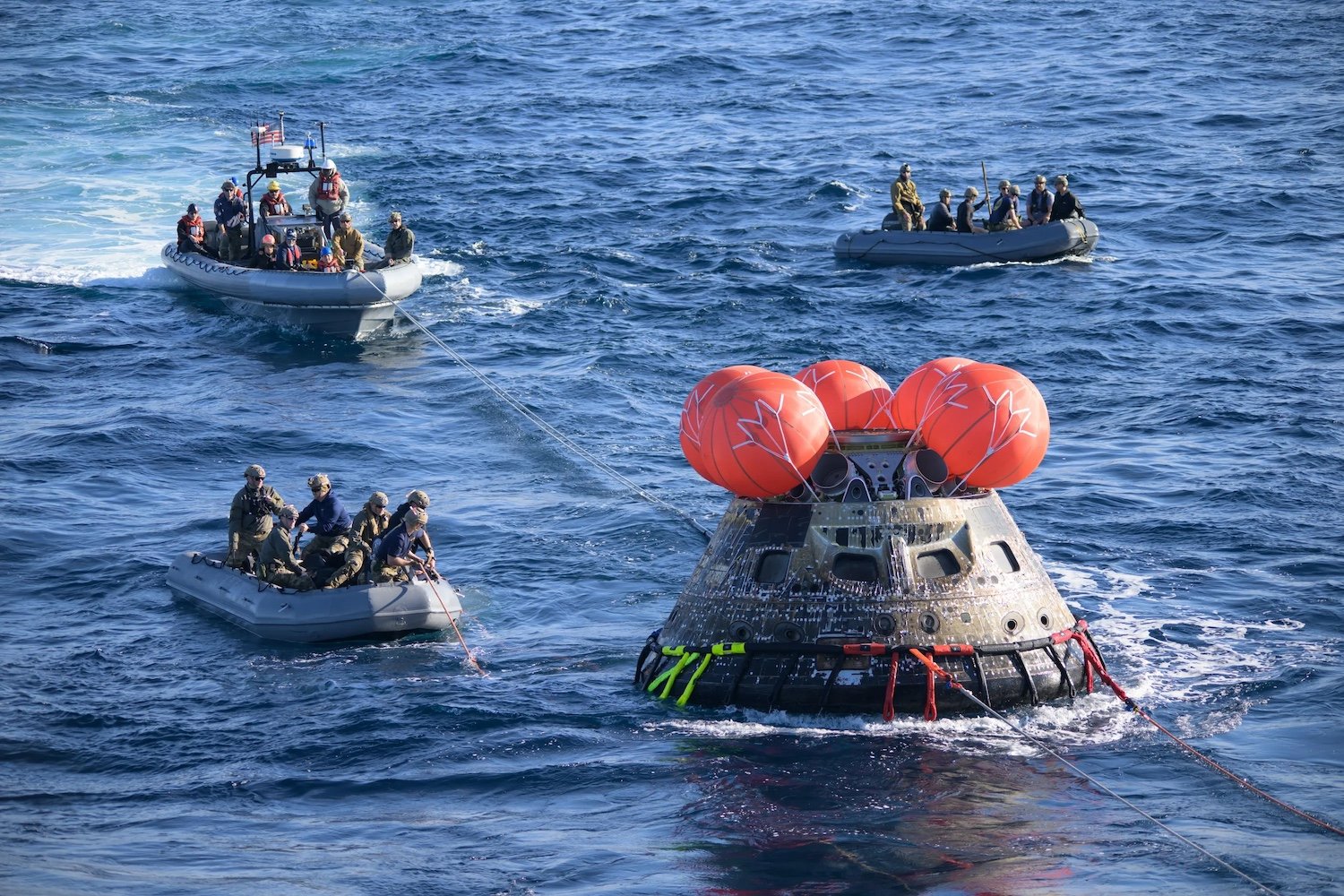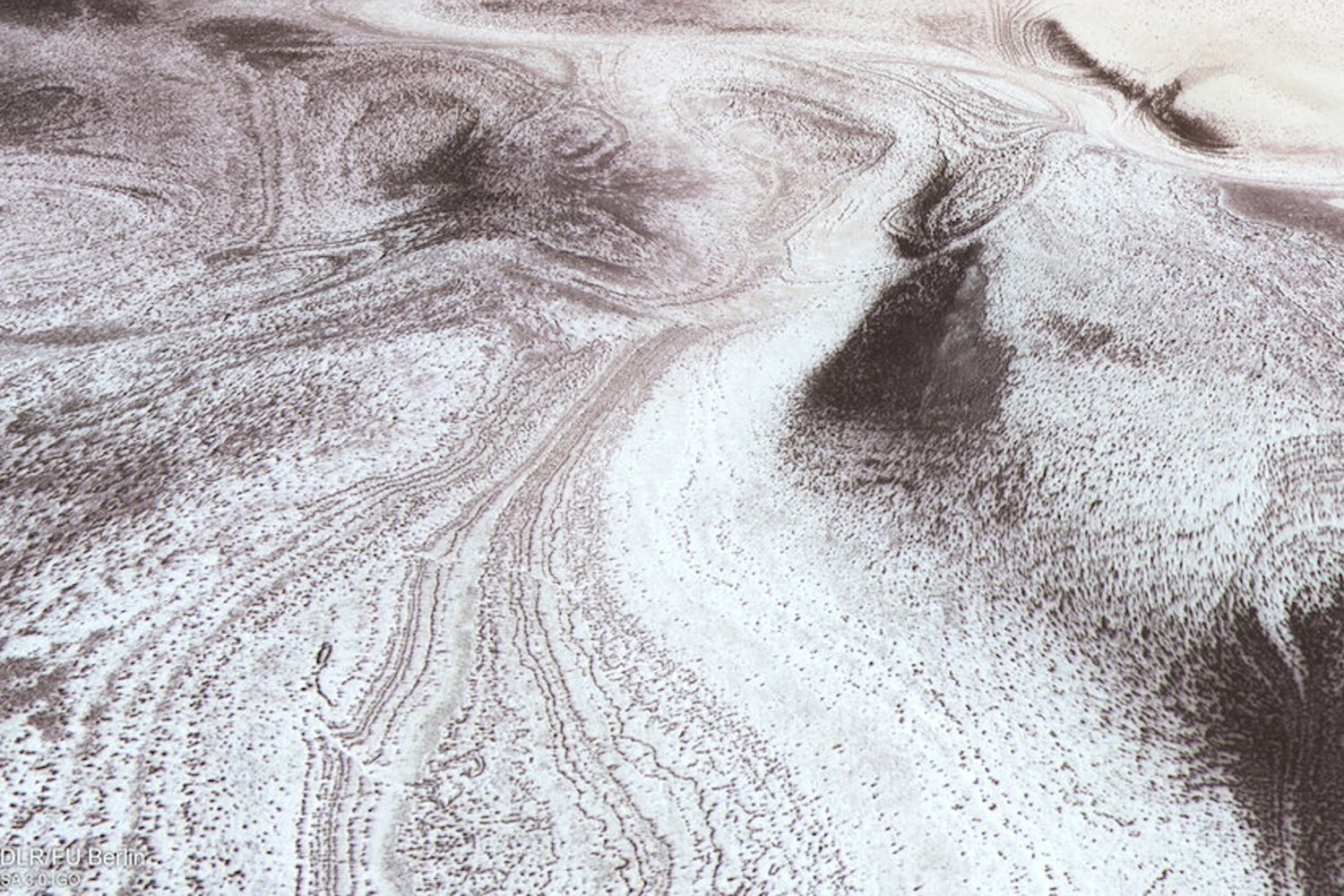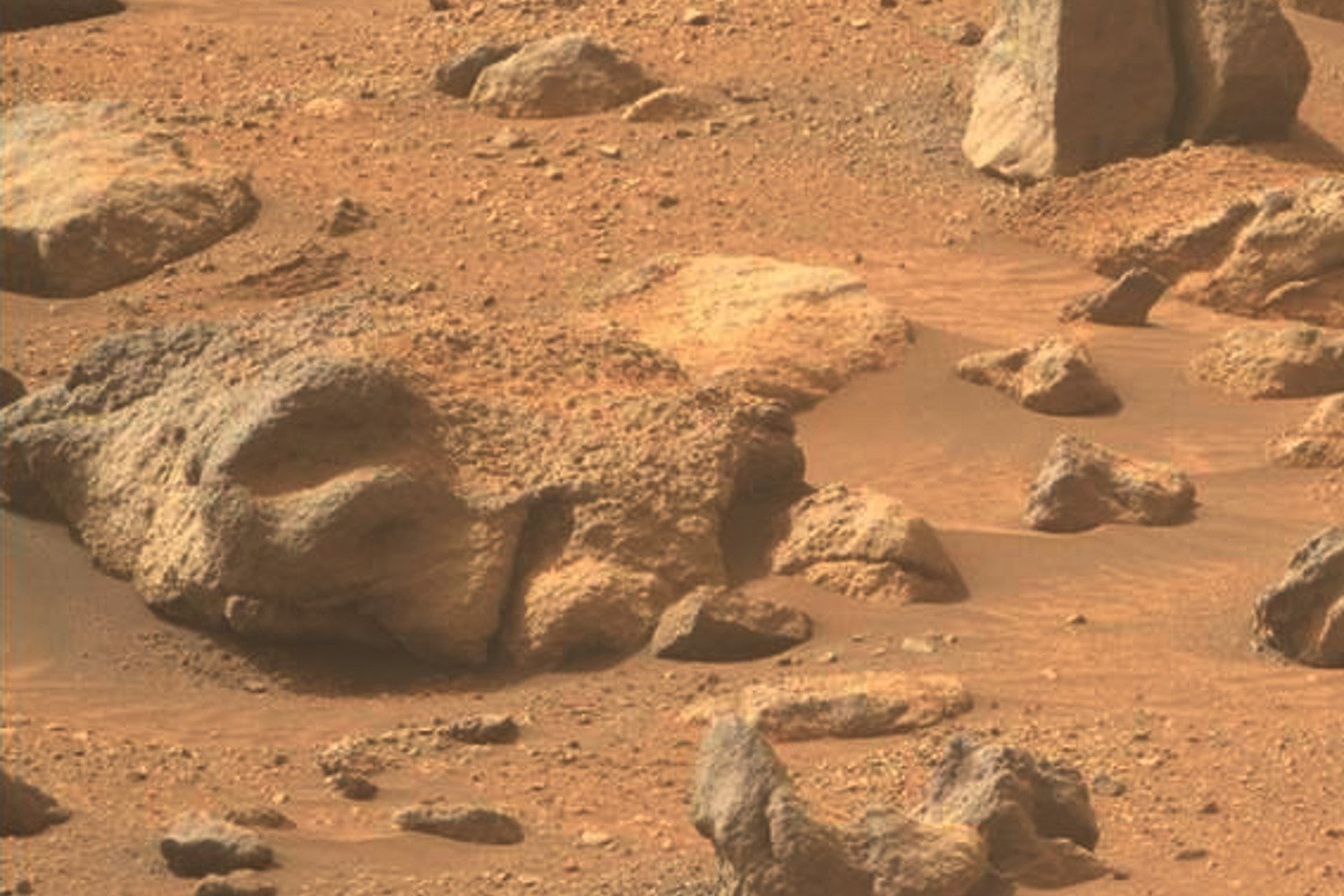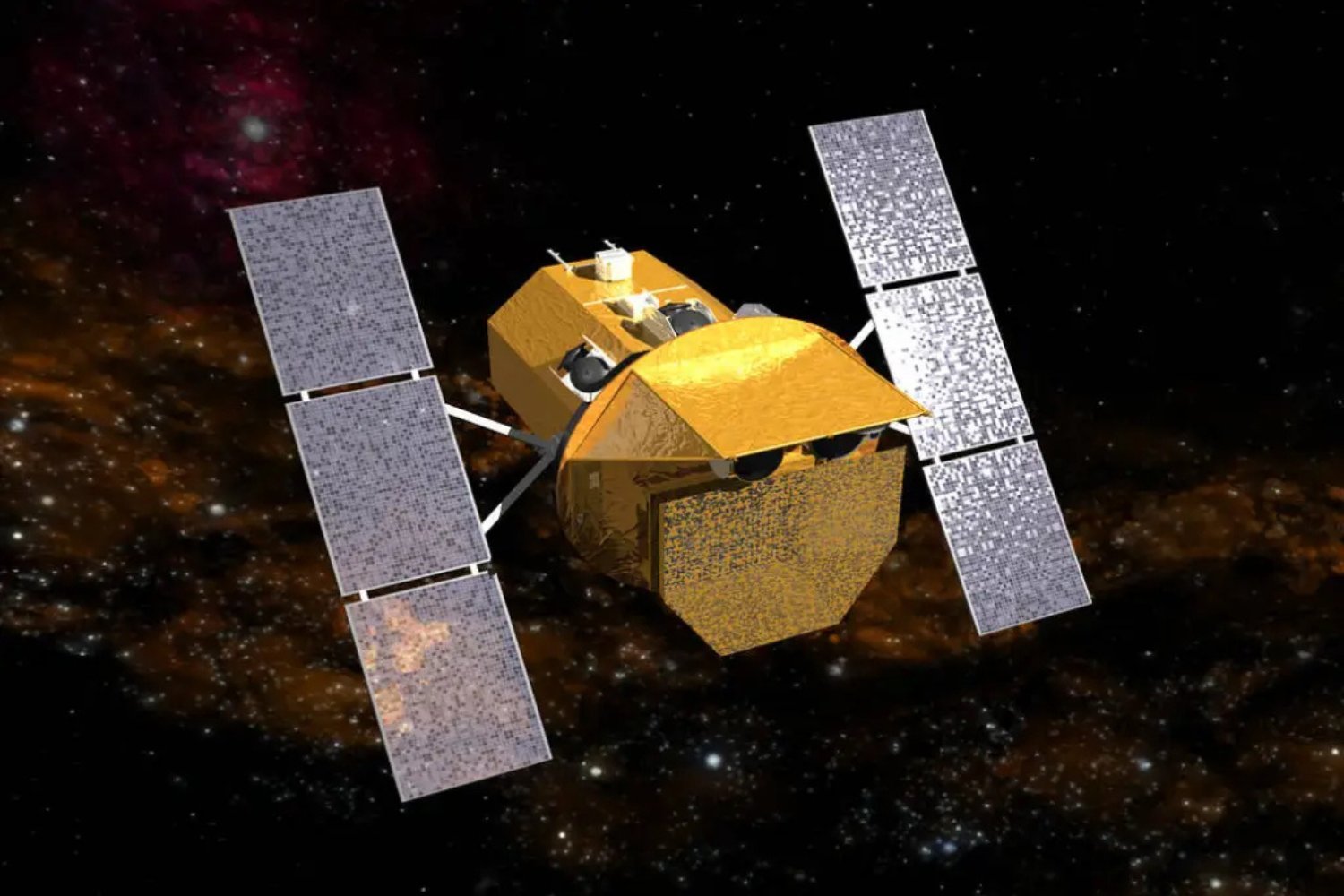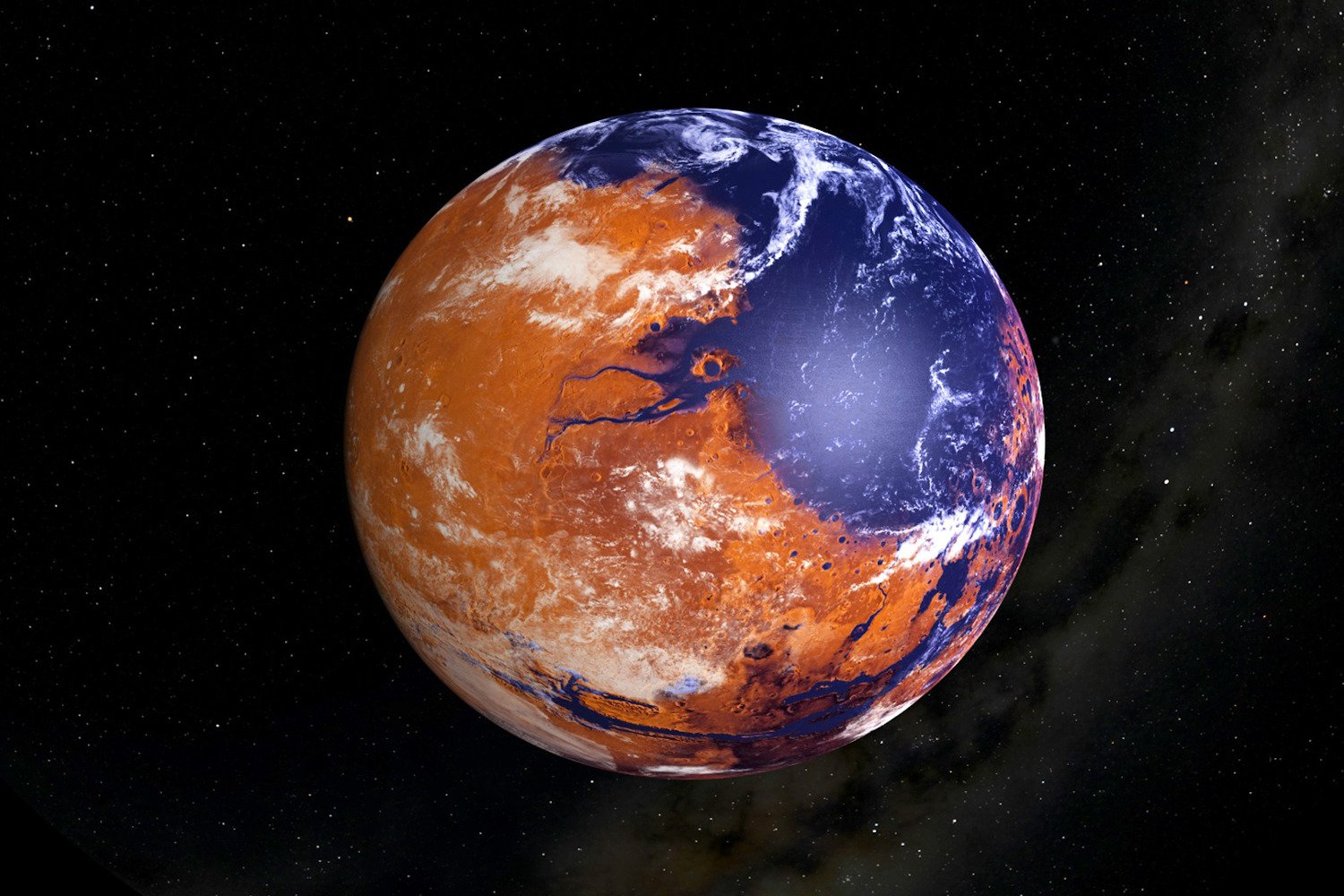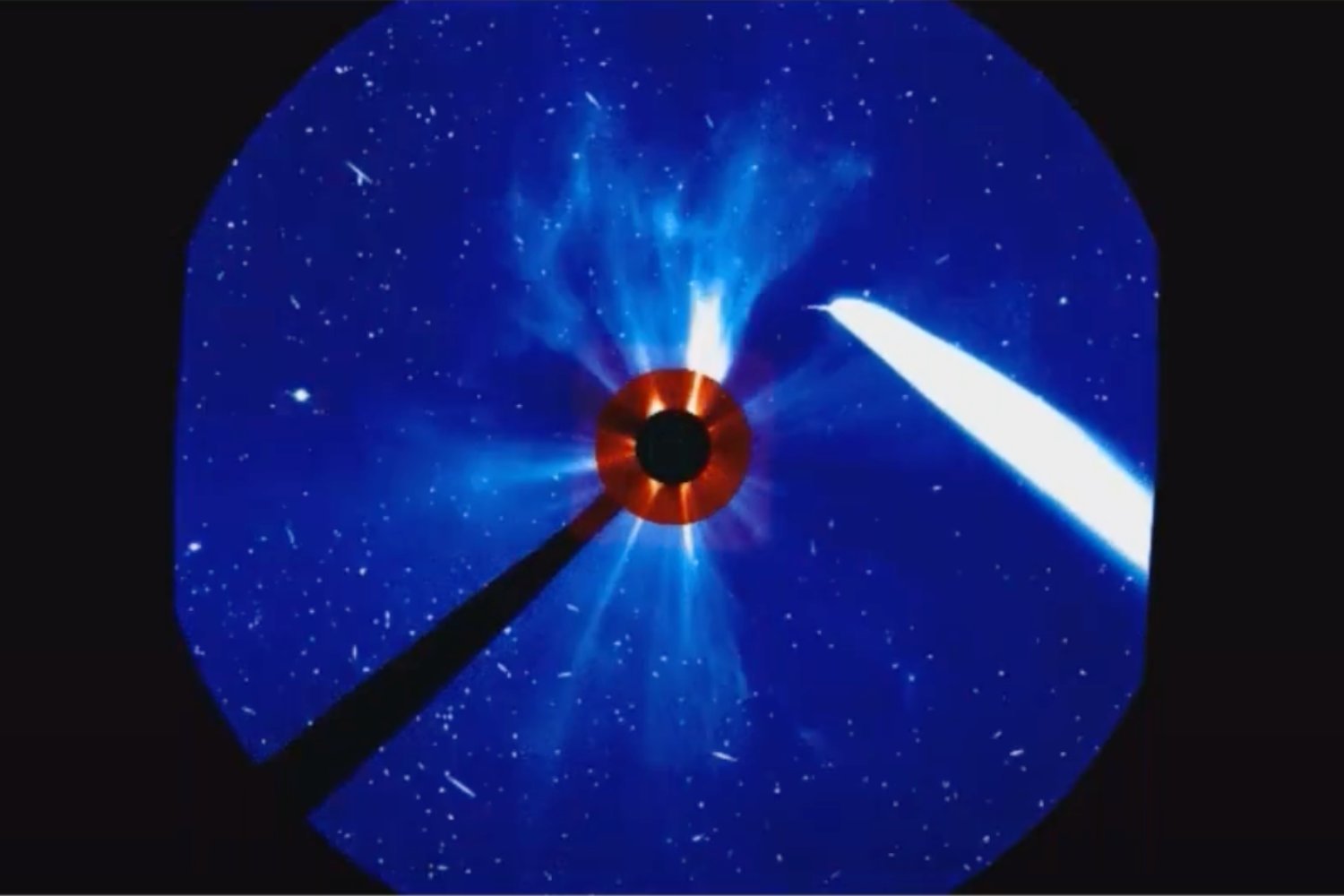The cosmos is a stage for dramatic events, and none are more captivating than the collision of galaxies. NASA’s Hubble and Webb space telescopes have teamed up to provide a chilling glimpse of this cosmic horror, revealing two spiral galaxies, IC 2163 and NGC 2207, locked in a deadly embrace. The resulting image, a high-resolution masterpiece, showcases these galaxies in unprecedented detail, foreshadowing their inevitable cannibalistic merger.
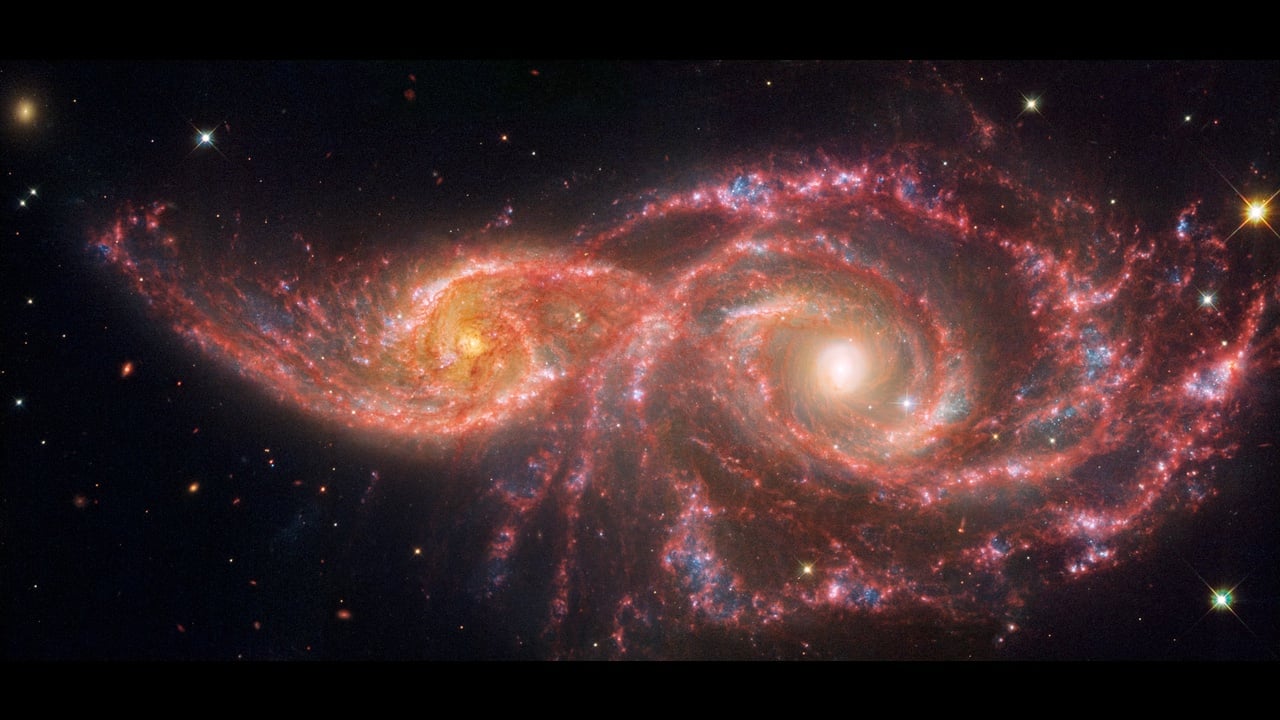
A Cosmic Collision in Progress
The two galaxies, resembling a pair of bloodshot eyes staring out from the darkness, are in the early stages of a collision that will unfold over millions of years. The smaller galaxy, IC 2163, can be seen on the left, trailing slightly behind the larger NGC 2207 on the right. This initial graze has already resulted in dramatic interactions, visible as vibrant red streaks where galactic material has violently collided. This eerie red hue is a result of combining mid-infrared data from the Webb telescope with visible and ultraviolet light captured by Hubble.
Stellar Nurseries and Supernovae
These interacting galaxies are hotbeds of star formation. They churn out the equivalent of two dozen Sun-sized stars every year, dwarfing the Milky Way’s production of two to three. This furious pace of star birth is accompanied by frequent supernovae, with seven observed in recent decades, compared to the Milky Way’s average of one every 50 years. These supernovae, while destructive, play a crucial role in clearing out regions within the spiral arms, rearranging gas and dust and paving the way for new star formation.
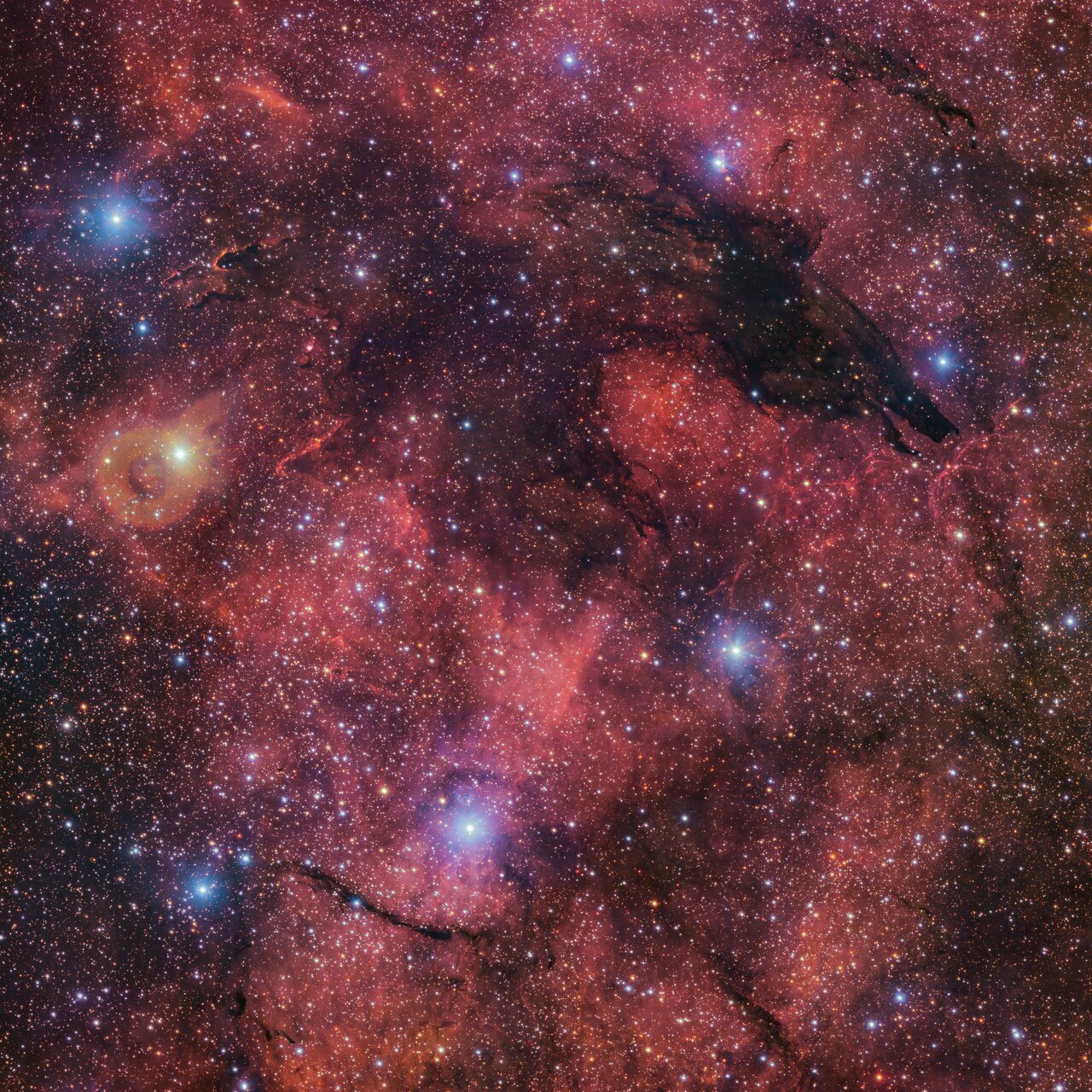
A Glimpse into the Future
While the first pass of these galaxies took millions of years, their eventual merger is still millions of years away. During this period, they will repeatedly swing past each other, gravitationally distorting their shapes and eventually coalescing into a single, chaotic galaxy. The image provides a preview of this future, predicting a distorted form with oddly shaped arms, losing their distinct spiral structures and merging into a single, eye-like feature.
Other Cosmic Curiosities
The universe is full of intriguing sights. The European Southern Observatory (ESO) recently captured an image of a dark nebula in the constellation Scorpius, resembling a shadowy wolf or perhaps a horse. This Dark Wolf Nebula, located about 5,300 light-years from Earth, is a vast cloud of cosmic dust obscuring the light from stars behind it.
Even closer to home, NASA’s Perseverance rover on Mars witnessed a miniature eclipse as the potato-shaped moon Phobos transited the Sun, creating a playful “googly eye” effect.
While these phenomena vary in scale and nature, they offer a reminder of the vastness and wonder of the universe, from galactic mergers to shadowy nebulae and even playful Martian eclipses.



